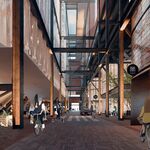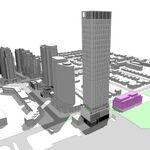superelevation
Active Member
Not only is the T logo lame, it's obviously plagiarized.
Many transit agencies around the world have a very similar logo. The MBTA's logo is the exact inverse of Metrolinx's T logo.
Well Metrolinx not following there own guidelines is nothing new, need I remind you about their "Crosstown Naming guidelines" which they for some reason needed. Sure anybody could have just opened Google Maps to pick out station names, but why do that when we can piss away tens of thousands of dollars on know-nothing consultants who are just gonna tell us what we already knew! Hows about such wonderful names like "Aga Kahn Park and Museum"? Short and to the point right!!!! Can I interest you in some "Cedarvale (formerally known as Eglinton West)? Our guidelines said we won't rename existsing stations but by-god we did it anyway)))))!!!!!!!!!!!!! Or what about Sloane? everyone said it should be named Bermondsey but that sounded to "corporate". What does that mean? Hell we don't even know ourselves. METROLINX!! We make you loose faith in the idea of a unified Transit network in the GTA!
I don't really see how adding an extra symbol that tells no body anything will help make it easier to find a transit stop. Especially if Metrolinx wants to strong arm every agency in the GTA to follow along with it. Metrolinx created a problem that didn't exist by presenting it to people as a problem and then offered a solution to the problem that they created.
1) There's a reason systems use the T and as per that video which was posted, the T was originally just the MBTA one as a placeholder, it was changed later.
2) They didn't use consultants, its been said many times - you are dunking on a basketball hoop which does not exist.
3) Hmm, maybe the professionals do see? I work in technology and do lots of user studies, as they said they talked to real people and asked them what the symbol represented and they said transit - I am not sure what the argument was, Metrolinx found the only 30 people in the entire GTHA who thought exactly the same thing at random?
"Metrolinx created a problem that didn't exist"
There is a reason that ridership falls of a cliff at the Toronto borders, now I can only assume you have never left the city of Toronto - but there are people there who "might" ride transit, in fact more people live there than in the city! The problem is none of these interacting transit agencies is properly integrated, so trips which one could very easily make in a car requires dealing with multiple agencies etc. if you don't know what the fare is or what route you need to take, or if the bus belongs to one of like 12 agencies then you might not want to ride transit. This is why we need to *fix* the wayfinding which is totally non-standard across the region. The obvious solution is one unified system but, as that would lead to a revolt Metrolinx has had to walk the fine line between unifying agencies and not stepping on their toes - they need to create a unified symbol which shows that all the transit agencies operate as a combined unit while not "taking away" their independence. Say you go to Waterloo, if the system was rolled out there right now you would see T signs on the GO Station and the GO Bus Stop but, not the LRT - hence you need a different fare card and cannot expect an integrated fare. When you get to Mississauga you immediately recognize the they have the T logo, which means you can easily transfer and use your Presto Card. MiWay's logo is still there because they operate the service and you are in or around Mississauga. To be clear wayfinding integration is not the biggest problem, and it's not the only problem - but it is a real one.




